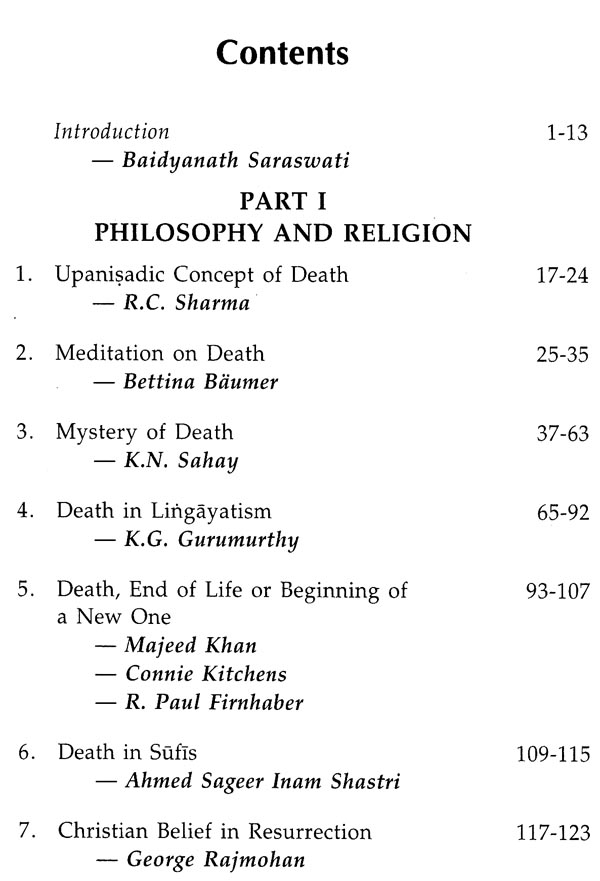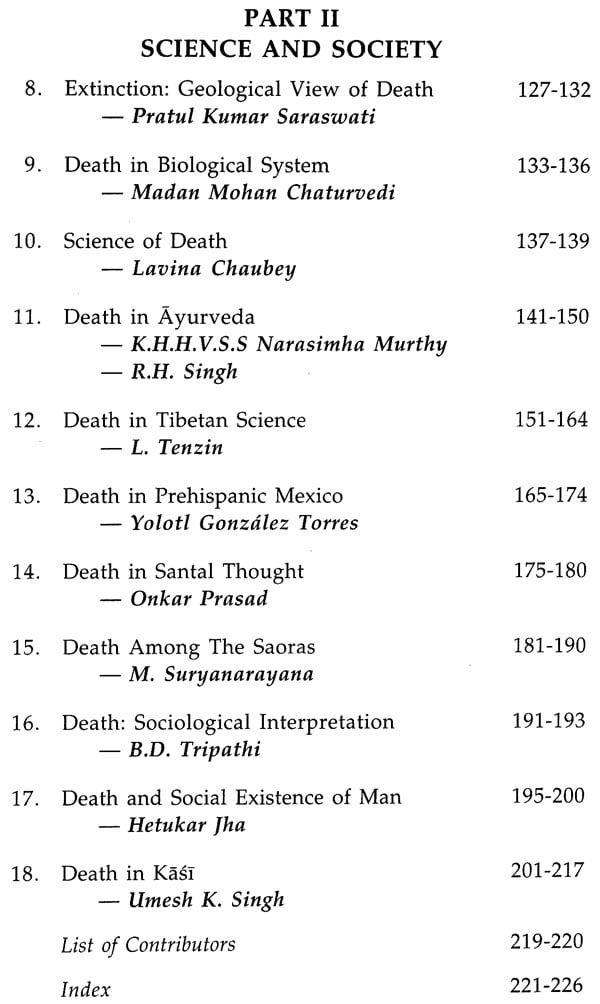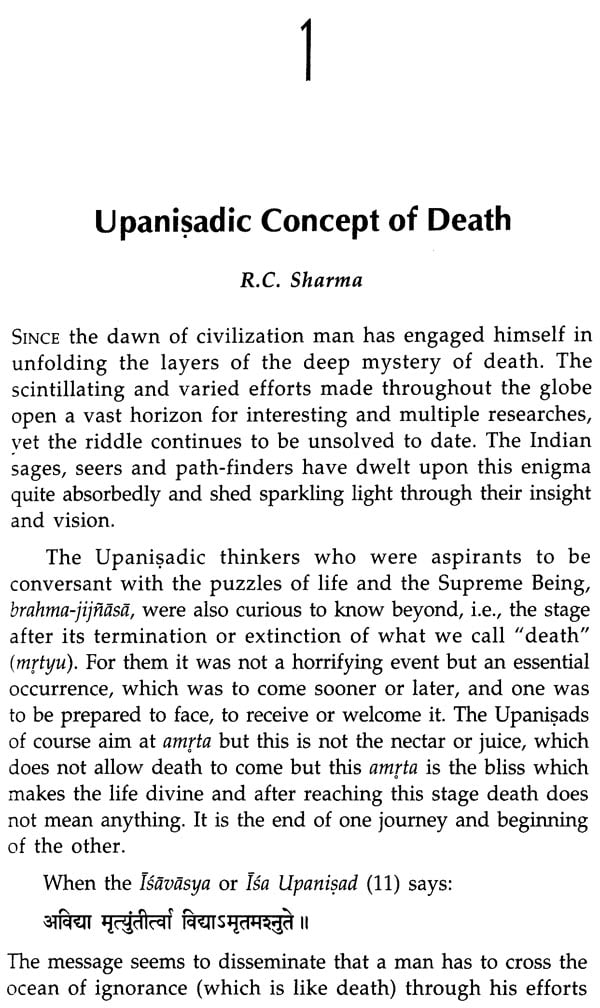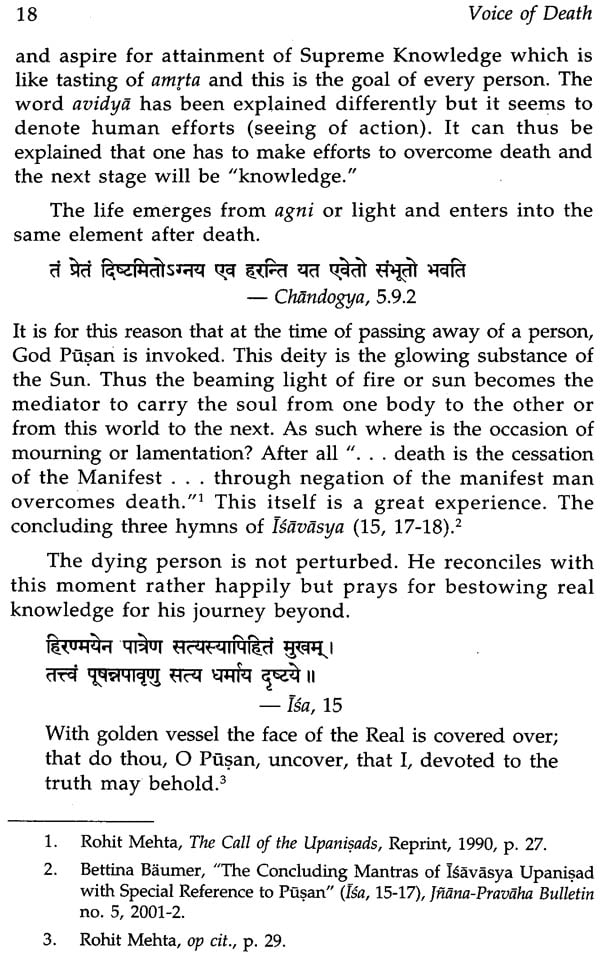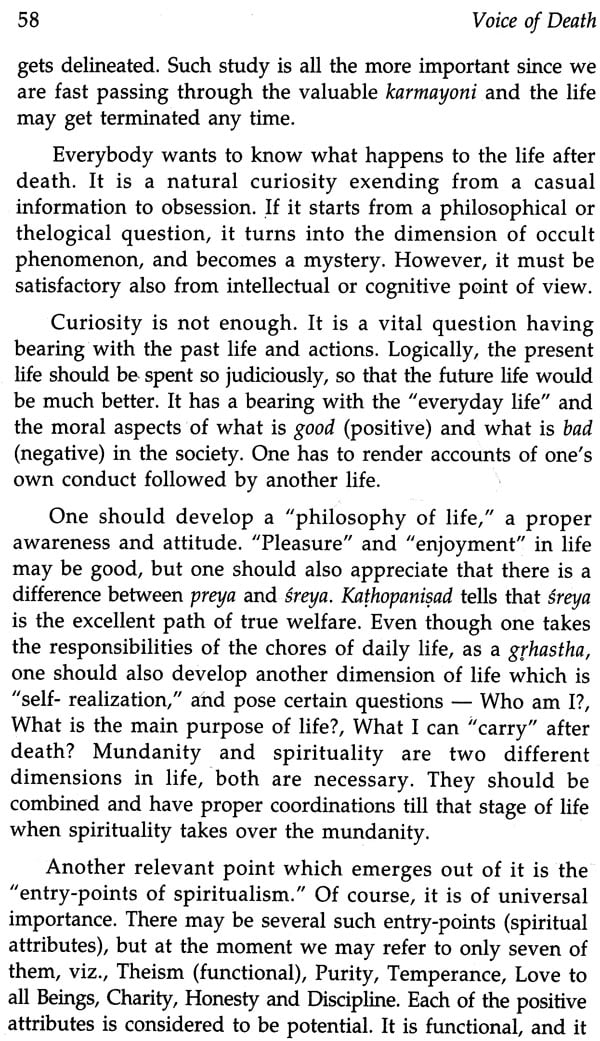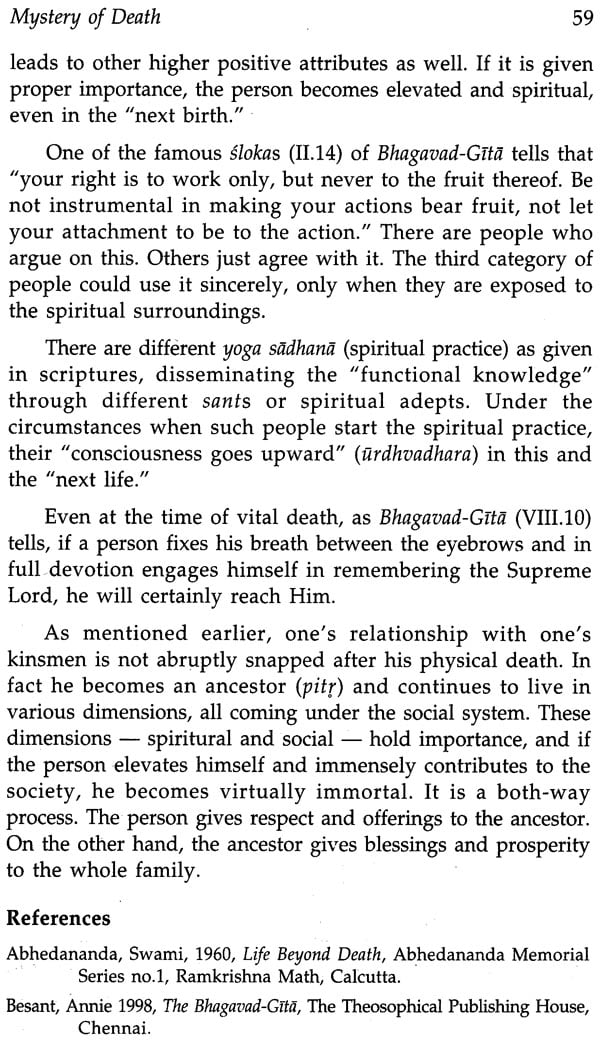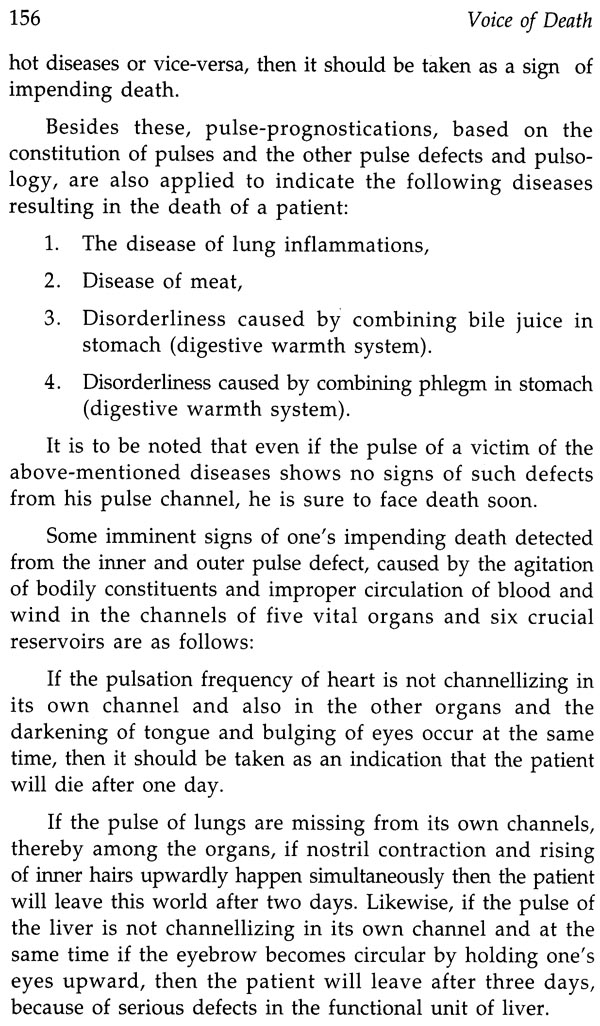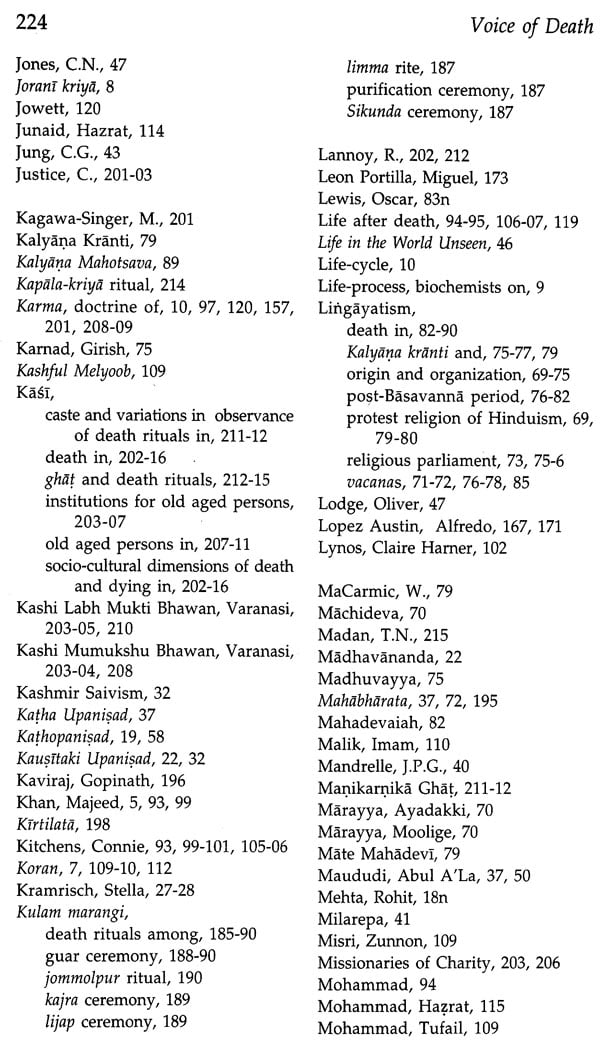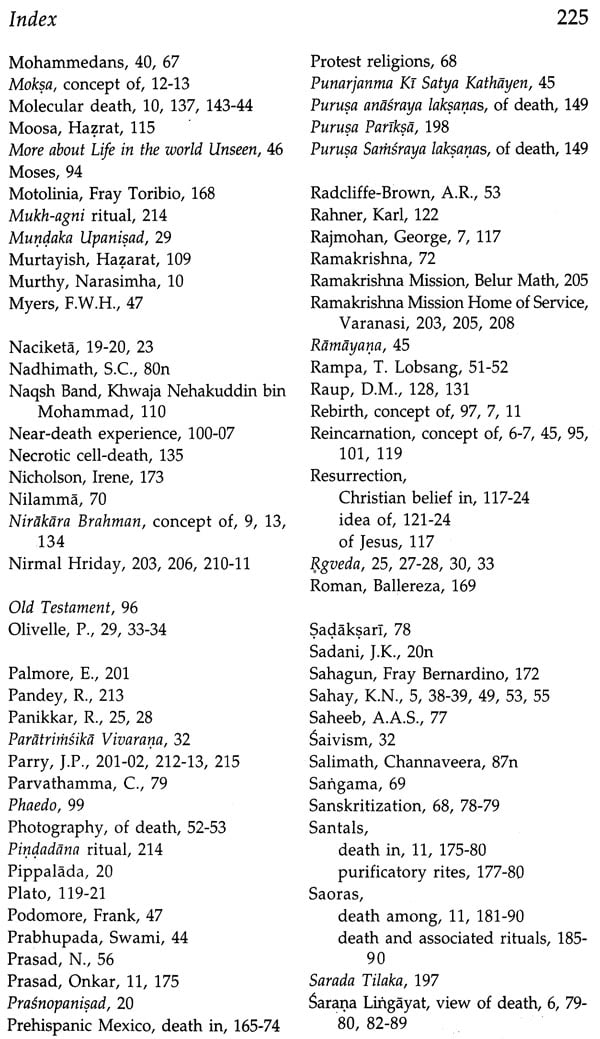
Voice of Death - Traditional Thought and Modern Science
Book Specification
| Item Code: | NAW001 |
| Author: | Baidyanath Saraswati |
| Publisher: | D.K.PRINTWORLD PVT.LTD. |
| Language: | English |
| Edition: | 2005 |
| ISBN: | 8124602743 |
| Pages: | 230 |
| Cover: | HARDCOVER |
| Other Details | 9.00 X 6.00 inch |
| Weight | 450 gm |
Book Description
Every culture has its own eschatology bearing with death, rituals, customs, beliefs and values. While the Hindus and the Buddhists adhere to the theory of reincarnation, the Muslims and the Christians hold the concept of eternal after life. In the present book, originally the proceedings of the seminar organized by the N.K. Bose Memorial Foundation, Varanasi, various distinguished scholars have richly contributed in presenting an in-depth study of the concept of death from the distinct viewpoint of all religions and cultures and at the same time taking into account their common concept of continuity of life after death in contrary to the biological science that adheres to the mechanism of "cell-death." Through the social, philosophical, medical, and Ayurvedic approaches to death, the existence of soul based on the ideas of immortality and ancestor-worship has been further validated. The book has demonstrated as to how this hard-headed research can illuminate a certain theory that would serve as a bridge between the physical science and social science, the purpose being to reveal the most overall general character of Nature and the nature of Man.
This book would definitely appeal to all general readers and more particularly to those of philosophical temperament keen to know more about Death and also the world beyond it.
FROM the viewpoint of anthropology the acceptance of a theory depends greatly upon its fitness to holistic perspective. This is what Normal Kumar Bose used to say. As an illustration to this pragmatism, a conference was organized on his thirtieth death anniversary. The theme was "Death in Traditional Thought and Modern Science." The participants were ideologists, anthropologists, sociologists, philosophers and physical and social scientists, with a view that this venture may serve as a support in leading a desirable world-view and a valid theory of death.
Theme
Life and death are universal. But do they stand at the same level? Or are there a principle of life on the one hand and a principle of death on the other? Did they start off together or sequence one after another. With whom do they continue? How do they unfold themselves in the world of the living? Do they belong to the same order of reality as that of the sky? Are they involved in maintaining the cosmic process? Is there a third entity beyond life and death? Can man ever find a key to this universal reality? By knowing death can one reach to a state of deathlessness? What is that state? Is it an existential state of mankind alone? Or does it apply to all creatures? Will there be the end of the world? Can one think of immortality within the world of life and death? Well, if the change of body is the play of the Soul, how about the theory of evolution which is vague and unpredictable?
Traditional cultures, haunted by the problem of death, have raised such questions and found answers in their own wisdom. According to the Hindu scriptures, death is not the sequel of sin or evil but the very condition of authentic life. Death is suffused in light. Immortality is reached only through death. No one becomes immortal with the body. Death is not evil. It leads man to the world of God and God to the world of man. There is a world of ancestors (pitrloka). This reflects cosmic solidarity, the two-fold reality. Death is the end of an earthly road as also the gateway to the sky, making the whole universe a unity. It may also be viewed as the one that stands for cosmic transformation, signifying continual resurrection to a new life. Buddhism and Jainism correspond to this wisdom-view of death. The Vedic, Upanisad and Pauranic thoughts are not hard to find among followers of Buddhist and Jain traditions.
Judaism, Christianity and Islam have also found answers to the mystery of death. Death is truly overcome when it is seen in God himself. This thought lies at the heart of the mystery of God's incarnation and His suffering and death. He was resurrected for man's sins and salvation. Judeo-Christianity and Islam hold in common the presence of God in human time. Hinduism recognizes the incarnation of God in human and animal forms. All these religions have dealt with, at great length, the concept of body, soul and the one or more than one heavenly God, identified as the transcendental and universal truth.
Aboriginal cultures view afterlife as something basically similar to the life on earth. They do not conceive of heaven as more beautiful than earth. Death is no different than other life transitions. The only differences that can be pointed out are that in death continuity is maintained not by the ever-changing physical body but by the spirit. In most initiate societies there are archetypal phases in life when a person changes at each major juncture. In this world-view one has to accept the adventure of continual death and rebirth. It can be grasped only in terms of spiritual principles. Death is the constant companion of the living. The importance of Death-ritual is widely accepted. The "afterlife" refers to the anthrop cosmic unity taken as reality.
Modern man concentrates on life and tends to wipe out all dealings with the dying and the dead. This attitude is fundamentally different from the traditional thought where both birth and death are held as occasions for celebration. Modernity aims at transcending the temporal order and conquering the sky. Will such a venture be possible at any point of time? What is "real" immortal life? Does immortality mean clinging to body? If so, it cannot be the "life" artificially alive as in modern hospitals.
Death is something larger than life. In Hindu religious context it is named as Siva, the "auspicious one," the God of Death and dissolution. He is Maharaja, the Great time, the absolute principle, the universal causality. He has a "third eye" that destroys the world. The Chinese word shih refers to time in general, indicating qualitative duration. Time is thought of as a union of "vital principles" (chic) producing life. Time and 'beginning' begin and end together: when a being disappears he ends, and with him his time, too, ends.
Scientists have raised questions: Why some species die out and others continue? Were they inferior organisms? Bad genes? Is it the law of nature (genetics) or nurture (environment)? Species change gradually into new species. The ancestral species does not die; it merely gets transformed into another species. Why some species live longer and others (humans) have a limited life-span? Why a species could not live forever? Is extinction important? Traditional cultures take a cosmic view. Some (holy) places as well as (sacred) time provide moksa (earthly extinction) to pious individuals (men, animals and birds). The view of death in the sacred science seems to be different from that of the view of the modern science. "Is it true?"
Book's Contents and Sample Pages
